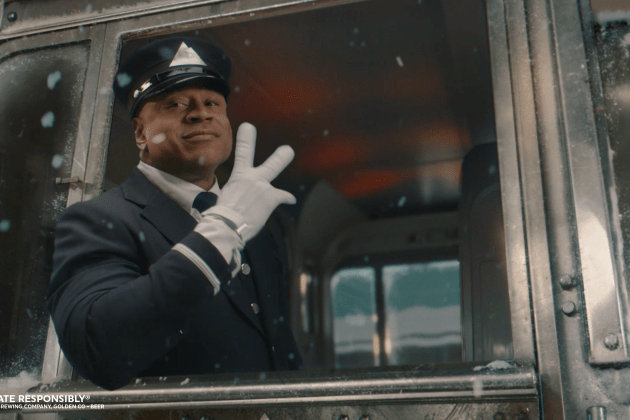Super Bowl Ad Review: Celebrity Commercials Tried for Fun, but Many Stuck With Formula
- Oops!Something went wrong.Please try again later.

Advertisers who normally use the Super Bowl to create commercials that make your jaw drop instead were content if they could get just a little smile.
For the second consecutive year, Madison Avenue relied on a massive parade of celebrities to capture consumer attention, foregoing in many cases the social messages and dynamic creative concepts that have generated chatter in the past. Where the Super Bowl was once the setting for Apple’s still-talked-about “1984” commercial or Procter & Gamble’s clever insertion of Tide into a bevy of ads, it’s now become a place for formulaic cameos of famous faces.
More from Variety
“It’s like a celebrity arms race,” says Simon Bruyn, executive creative director at Mother, an independent agency. “It’s like one celebrity isn’t enough.”
Super Bowl viewers saw Danny DeVito join Arnold Schwarzenegger for State Farm; Pete Davidson work with Kate McKinnon for Hellmann’s; Heidi Gardner and Dan Levy pair up for Homes.com; and Chris Pratt pitch Pringles. Christopher Walken, Jeff Goldblum, Aubrey Plaza and Ice Spice were also on hand, as were cast members of “Saturday Night Live,” such as Heidi Gardner for Homes.com. Marcelo Hernandez, a featured player, played a key role in a Nissan ad broadcast on the Spanish-language version of the Big Game on Univision.
To be sure, there were a few surprises. Beyonce appeared for Verizon, teasing the possible release of new music and appearing in a dizzying array of guises. A Super PAC supporting Robert F. Kennedy, Jr., an outlier in the 2024 presidential race, ran a commercial for his bid with strong imagery tying him to campaigns run by his uncle, the former President John F. Kennedy. The spot’s appearance was unexpected. People familiar with the advertising lineup had initially said it would not contain commercials from politicians.
“The room went silent when that came on. We all were paying attention on both sides of the aisle,” says Jack Westerholt, creative director at TRG, an independent agency based in Dallas. “The art direction overwhelmingly had a throwback, like it was from the 60s.”
Ad executives were also impressed by a commercial from Hershey’s Reese’s peanut butter candy, which introduced a new caramel version. The spot relied on the twist in the product’s flavoring, not a celebrity visit or joke. To be sure, Will Arnett narrated the ad, but a loud group of expressive consumers filled the screen and the news about the new product was the point that commanded attention.
One ad that broke out from the pack was a new commercial from Dunkin featuring Ben Affleck. The actor has appeared on behalf of the doughnut-and-coffee chain in the past, but on Sunday he raised his game by breaking into a recording session led by his wife, Jennifer Lopez, with a new singing group called the DunKings that included Matt Damon, Tom Brady, Fat Joe and Jack Harlow. Damon was spotted nibbling on a new product that put doughnut pieces on a stick. “It’s like insane,” says Bruyn.
None of the ads, however, stunned in the way memorable Super Bowl commercials have in the past. Marketers seem more way of generating pushback on social media, mindful of travails suffered by Anheuser-Busch InBev’s Bud Light. The venerable brew saw sales slip in 2023 after it tried to expand beyond its immediate customer base with a promotion that saw transgender advocate Dylan Mulvaney get a customized can of the beer.
“I feel like people are really just playing it safe,” says Buryn. “There is such concern now, gettign this amount of eyeballs on something, and I get the impression advertisers are saying, “OK, how do we show up, but let’s not do too much” so people don’t start speaking negatively on social media.”
Gone in this year’s NFL extravaganza were the two-minute long ads that helped advertisers like Chrysler make a mark in recent years in spots that featured Bruce Springsteen or Bob Dylan. And the list of first-time Super Bowl sponsors, often filled with the names of inexperienced digital start-ups, was instead crammed with experienced marketers such as the online retailer Etsy or the chocolatier Lindt.
Simply put, says Westerholt, celebrities and humor is a recipe that tends to catch attention. “It’s formula, but it’s formula that works.”
Some chose to test their own equation. DoorDash relied on a crazy code that purported to help viewers win everything else advertised during this year’s extravaganza. Toyota, which had previously stated it would not take part in Super Bowl LVIII, in recent days made a U-turn and came back to the ad roster. Its commercial avoided celebrities, and focused on its new Tacoma and the reactions passengers got from going off-road. “We leaned into a simple truth,” says Mike Tripp, group vice president, Toyota Marketing, in a recent interview.
Most marketing executives felt they were giving consumers what they wanted — fewer reminders about the polarization of the nation or the state of the global environment, and more reasons to smile rather than frown. “Very light and positive” is what Ferrara Candy Co. offered in the first Super Bowl ad in the company’s history,” says Greg Guidotti, the company’s chief marketing officer. Ferrara ran an ad for its Nerds candy that depicted an animated jelly candy being encrusted with crunchy Nerds critters. Dance influencer Addison Rae offered her approval in the final seconds of the ad.
In the current climate, that may about as much as consumers can handle.
Best of Variety
Sign up for Variety’s Newsletter. For the latest news, follow us on Facebook, Twitter, and Instagram.
